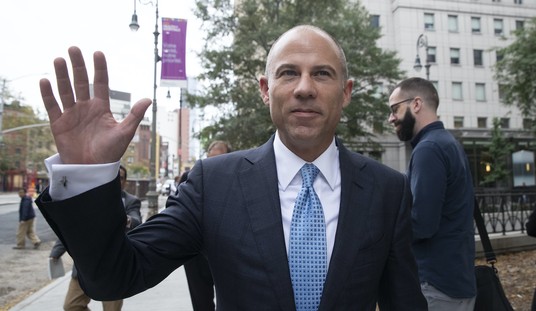James A. Johnson (born December 24, 1943) is a United States Democratic Party political figure. He was the campaign manager for Walter Mondale’s failed 1984 presidential bid and chaired the vice presidential selection committee for the presidential campaign of John Kerry. He was involved in the vice-presidential selection process for the 2008 Democratic presidential nominee, Senator Barack Obama.
He was also the Chairman and CEO of Fannie Mae. Johnson is in the news again because of Gretchen Morgenson and Joshua Rosner’s book, Reckless Endangerment. An excerpt from her book says:
“When we boost the number of homeowners in our country,” Clinton said in a 1995 speech, “we strengthen our economy, create jobs, build up the middle class, and build better citizens.”
Clinton’s prediction about the middle class was perhaps the biggest myth of all. Rather than building it up, the Partners in Homeownership wound up decimating the middle class. It left Americans in this large economic group groaning under a mountain of debt and withdrawing cash from their homes as a way to offset stagnant incomes. …
But what few have recognized is how the partners in the Clinton program embraced a corrupt corporate model that was also created to promote homeownership. This was the model devised by Fannie Mae, the huge and powerful government-sponsored mortgage finance company set up in 1938 to make it easier for borrowers to buy homes in Depression-ravaged America. Indeed, by the early 1990s, well before the government’s partnership drive began, Fannie Mae had perfected the art of manipulating lawmakers, eviscerating its regulators, and enriching its executives. All in the name of expanding homeownership.
Under the direction of James A. Johnson, Fannie Mae’s calculating and politically connected chief executive, the company capitalized on its government ties, building itself into the largest and most powerful financial institution in the world. In 2008, however, the colossus would fail, requiring hundreds of billions in taxpayer backing to keep it afloat. Fannie Mae became the quintessential example of a company whose risk taking allowed its executives to amass great wealth. But when those gambles went awry, the taxpayers had to foot the bill….
How Clinton’s calamitous Homeownership Strategy was born, nurtured, and finally came to blow up the American economy is the story of greed and good intentions, corporate corruption and government support. It is also a story of pretty lies told by politicians, company …
One of the starring figures in the book is Barney Frank.
But the record shows Frank exercising a deep and abiding interest in defending the companies as Congress was crafting the 1992 legislation that would protect taxpayers against losses and ensure the company’s safety and soundness in the future.
During a congressional hearing that year, Robert D. Reischauer, director of the Congressional Budget Office, voiced his concern that taxpayers might be left holding the bag if Fannie tumbled: “Making sure that Fannie and Freddie are entities that are independent, that have some visibility, that have safety and soundness as their prime objective, I think, is a way to ensure that the taxpayer is protected at those times when the klieg lights go off.”
This comment triggered so fierce and unrelenting a cross-examination of Reischauer by Frank that Henry B. Gonzalez, the subcommittee chairman, had to admonish the Massachusetts congressman to let the witness answer.
Frank fumed that concerns about safety and soundness of Fannie and Freddie were overdone. “The focus on safety and soundness to the exclusion of any concern about their mission suggests to me that what we’re going to get is a result where safety and soundness become, not the primary but the exclusive focus at the sacrifice of our ability to do housing,” he said.
In 2010, however, after concerns about the companies’ safety and soundness had been proven justified, Frank said: “I really have no recollection of that ’92 Act.”
The interesting thing about the emerging narrative on the role of Fannie Mae is that even liberal outlets are having to face the allegations, no matter, how unpalatable it is to them. Stanley Kurtz suggests that much more remains to be highlighted. “Barack Obama was knee-deep in ACORN activities just as their banking campaign reached its height. In fact, much of ACORN’s national housing campaign in the mid-nineties was coordinated from the Chicago office Obama was funneling money to at the time.”
So if the combination of the publication of Reckless Endangerment and Michele Bachmann’s campaign brings a new awareness of Fannie Mae’s role in precipitating the financial crisis, by rights it also ought to raise awareness of ACORN’s role, and Obama’s abetment of ACORN activism as well. Of course, for that very reason, the entire story is likely to be ignored. Maybe only someone like Bachmann has the power to break it through.
The story of Fannie’s role, if true, will be concealed every step of the way. The prominent role of the agency’s veterans in the Obama campaign suggests they knew what they wrought was about to come due and were determined to ensure that those who were going to ride in on the wings of the financial crisis would tell the history the way the wanted it. Of the events that Morgenson describes, the likely response will be, “I have no recollection.” But it is not the past but current events that should worry the voters if those who helped the crisis have now taken it upon themselves to solve it.
More here.
“No Way In” print edition at Amazon
Tip Jar or Subscribe for $5









Join the conversation as a VIP Member